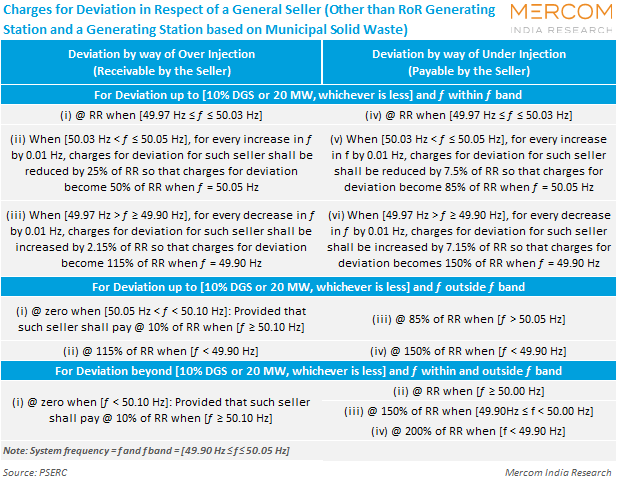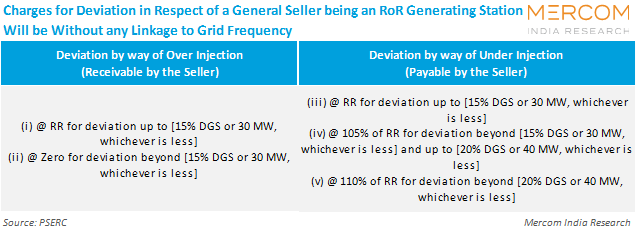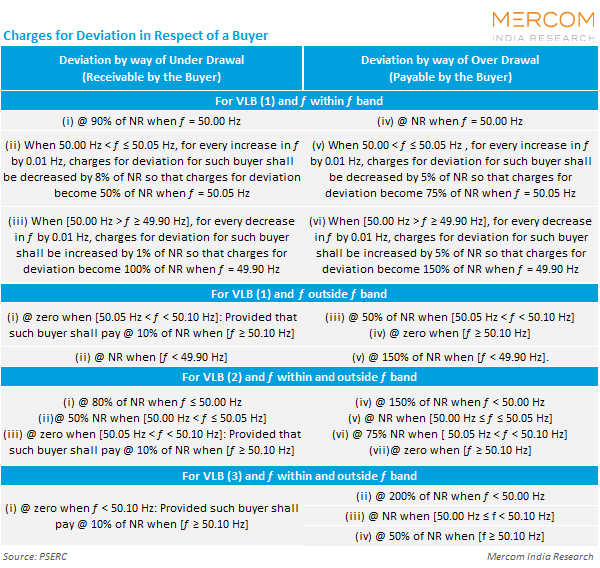Punjab Electricity Regulator Issues Draft Deviation Settlement Guidelines
Stakeholders can submit their feedback by October 23, 2025
October 13, 2025
Follow Mercom India on WhatsApp for exclusive updates on clean energy news and insights
The Punjab Electricity Regulatory Commission (PSERC) has issued the draft Deviation Settlement Mechanism and Related Matters Regulations, 2025, to establish a commercial mechanism to ensure grid users’ adherence to scheduled electricity drawal and injection and maintain grid security and stability.
Stakeholders can submit their feedback by October 23, 2025.
The regulations apply to all sellers with installed capacity of 5 MW and above connected to the intrastate transmission system (InSTS), including renewable energy, except wind and solar open access generators and captive generators, except in situ captive.
It also applies to all buyers, including distribution licensees, deemed distribution licensees, and full open access consumers connected to the intrastate transmission system. Partial open access consumers (even on InSTS) and all open access consumers on the distribution network are settled under the Open Access Regulations.
Deviation Computation
- Deviation in a time block for general sellers will be computed as follows:
Deviation – general seller (DGS) (in MWh) = [(Actual injection in MWh) – (Scheduled generation in MWh)].
Deviation – general seller (DGS) (in %) = 100 x [(Actual injection in MWh) – (Scheduled generation in MWh)] / [(Scheduled generation in MWh)]
- Deviation in a time block for buyers will be computed as follows:
Deviation – buyer (DBUY) (in MWh) = [(Actual drawal in MWh) – (Scheduled drawal in MWh)].
Deviation – buyer (DBUY) (in %) = 100 x [(Actual drawal in MWh) – (Scheduled drawal in MWh)] / [(Scheduled drawal in MWh)].
Normal Rate of Charges for Deviation
The normal rate (NR) of charges for deviation for a particular time block will be the highest of (A), (B), or (C), where (A), (B), and (C) are as follows:
(A) The weighted average ACP (in paise /kWh) of the integrated day-ahead market (DAM) segments of all the power exchanges.
(B) The weighted average ACP (in paise /kWh) of the real-time market segments of all the power exchanges.
(C) The sum of:
(a) 1/3 [weighted average ACP (in paise/kWh) of the integrated DAM segments of all the power exchanges]
(b) 1/3 [weighted average ACP (in paise/kWh) of the real-time market segments of all the power exchanges]
(c) 1/3 [ancillary service charge (in paise/kWh) computed based on the total quantum of Ancillary Services (SRAS UP and TRAS UP) deployed and the net charges payable to the ancillary service providers for all the regions]: provided that in case of non-availability of ACP for any time block on a given day, ACP for the corresponding time block of the last available day will be considered.
Charges for Deviation
Charges for injection of infirm power are zero, except in the following cases:
- For thermal generating stations, infirm power injected from the date of first synchronization up to successful completion of the trial run will be paid at the normal rate of charges for deviations for each time block, subject to a cap of ₹2.86 (~$0.032) kWh.
- If infirm power is scheduled after a successful trial run as specified in the Grid Code, the charges for deviation over the scheduled infirm power will be those applicable to a general seller.
- Notwithstanding these provisions, when system frequency is greater than 50.05 Hz, the charges for injection of infirm power, or for deviation of scheduled infirm power after the successful trial run by way of over-injection by a general seller, will be zero.
Accounting of Charges for Deviation
SLDC will prepare a weekly statement of charges for deviations for the period from Monday 00:00 to Sunday 24:00. Meter readings of all interface meters must be fetched automatically through automated meter reading and communicated to the State Load Despatch Centre (SLDC). The implemented schedule must be taken from the North Regional Load Despatch Centre (NRLDC) or SLDC websites and from power exchanges received by email. The reference charge rate or normal rate of charges for deviations must be applied.
For frequency, SLDC must use the frequency considered by the Northern Regional Power Committee in the DSM statement issued to the state as available on the NRPC website, or the frequency declared by NRLDC on its website. SLDC must prepare the DSM bill within five working days after receiving all related data from the concerned parties. A soft copy of the DSM bill must be published on the SLDC website from the date of issue.
All payments on account of charges for deviation and any interest received for late payment must be credited to the state deviation pool account, which must be maintained and operated by SLDC in accordance with these regulations. The Commission may direct another entity to operate and maintain the state deviation pool account.
SLDC must maintain separate books of account for the principal component and the interest component of deviation charges. State entities must comply with all statutory requirements for payment of applicable levies, taxes, and duties. State entities must also facilitate SLDC in meeting the reporting requirements of statutory authorities as necessary.
All payments received in the state deviation pool account must be appropriated in the following sequence. First, costs or expenses or other charges incurred on recovery of deviation charges; second, overdues or penal interest if applicable; third, normal interest; fourth, dues towards the regional deviation pool account; and fifth, deviation charges.
Any surplus funds in the state deviation pool account at the end of the financial year must be used for improvements in power system operations, including measures and studies to improve reliability, security, and safety of grid operations, capacity building and training related to system and market operations, and other purposes specified by the Commission or schemes devised in consultation with the National Load Despatch Centre or the Regional Load Despatch Centre with prior approval of the Commission.
Any shortfall in the state deviation pool account at the end of a weekly settlement period must be recovered by an additional charge on State entities in proportion to the net deviation charges payable by the concerned State entity for the applicable weekly settlement period through supplementary bills.
SLDC must prepare programs and submit an annual plan to the Commission for utilization of surplus funds, and must implement the programs only after approval of the Commission.
Payment Schedule
Payment of deviation charges has high priority, and the concerned state entity must pay the indicated amount within ten days of issue of the statement of charges for deviation by the SLDC into the state deviation pool account. The state entity must make payment irrespective of any mistake or error in the bill, and the SLDC will rectify any revision or modification on account of such mistake or error in subsequent bills of the entity concerned.
If payment is delayed beyond ten days from the date of issue of the statement by the SLDC, the defaulting State Entity must pay simple interest at 0.04% for each day of delay.
All payments to entities entitled to receive any amount on account of deviation charges must be made within two working days of receipt of payments in the state deviation pool account. In case of delay in payment into the state deviation pool account and associated interest, if any, beyond ten days from the date of issue of the statement of charges for deviations.
State entities receiving payment for deviation or interest will be paid from the balance available in the state deviation pool account, and if the balance is insufficient, payment will be made on a pro rata basis from the available balance.
The liability to pay interest for delay in payments into the state deviation pool account will continue until the interest is fully paid, irrespective of whether constituents entitled to receive payments have been paid from the state deviation pool account in part or in full.
All sellers and buyers who, at any time during the previous financial year, failed to make payment of charges for deviation within the specified time must open a letter of credit equal to 110% of their average payable weekly liability for deviations in the previous financial year, in favor of the SLDC, within a fortnight from the date these regulations come into force.
If any state entity fails to make payment of charges for deviation within the specified time during the current financial year, it must open a letter of credit equal to 110% of the weekly outstanding liability in favor of the SLDC within a fortnight from the due date of payment.
The letter of credit amount must be increased to 110% of the payable weekly liability for deviation in any week during the year if that liability exceeds the previous letter of credit amount by more than 50%.
The CERC issued its Deviation Settlement Mechanism and Related Matters Regulations in August last year.
Subscribe to Mercom’s real-time Regulatory Updates to ensure you don’t miss any critical updates from the renewable industry.




